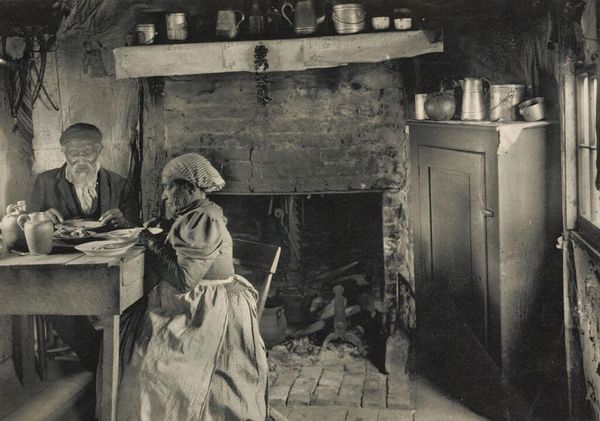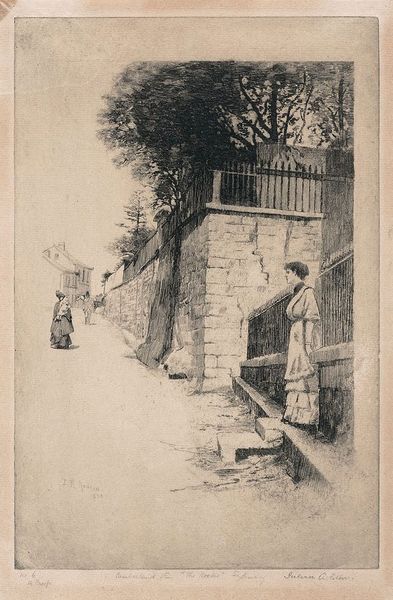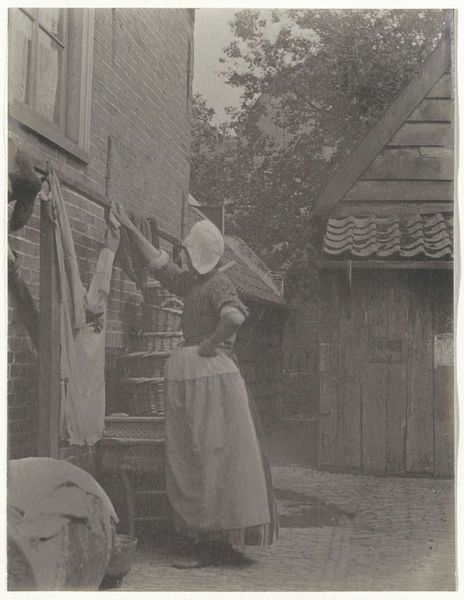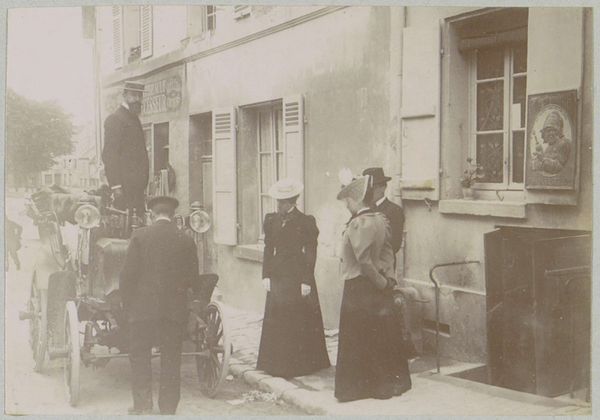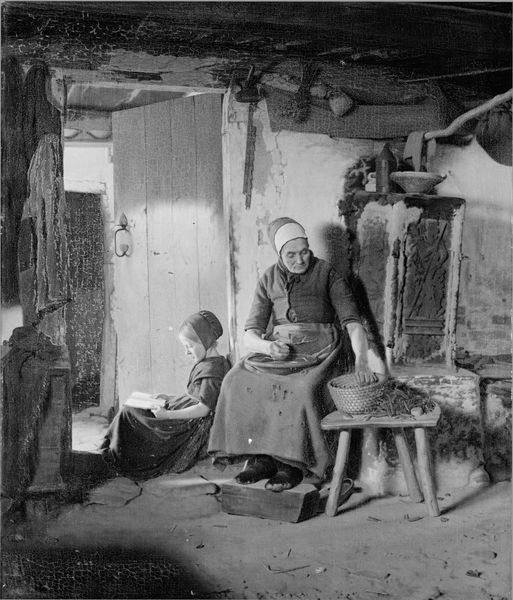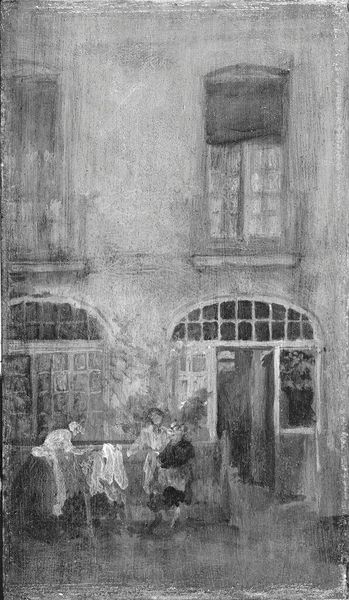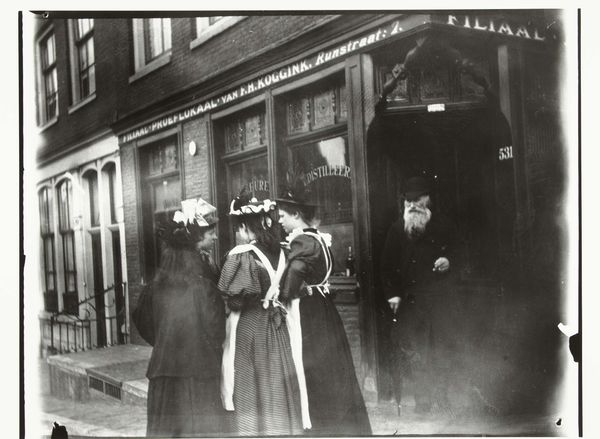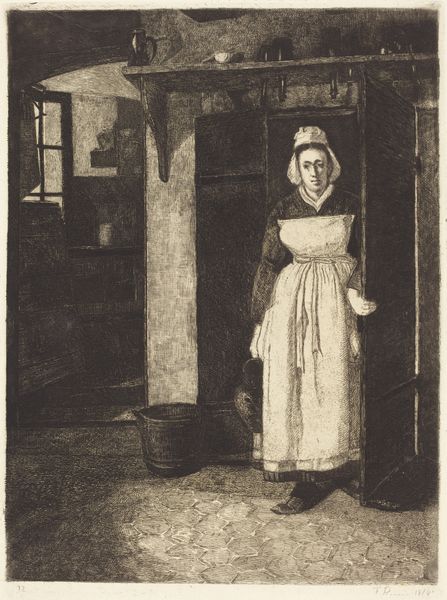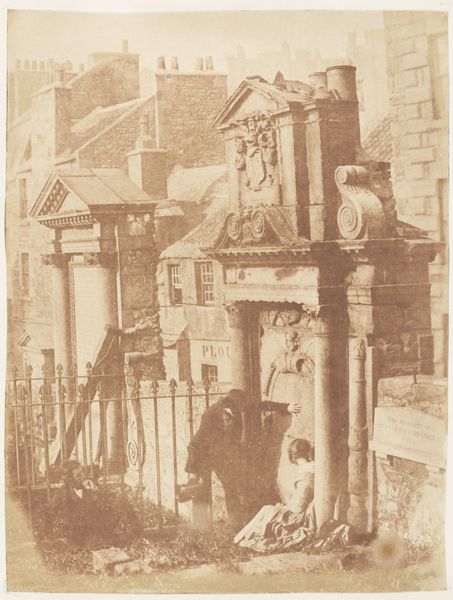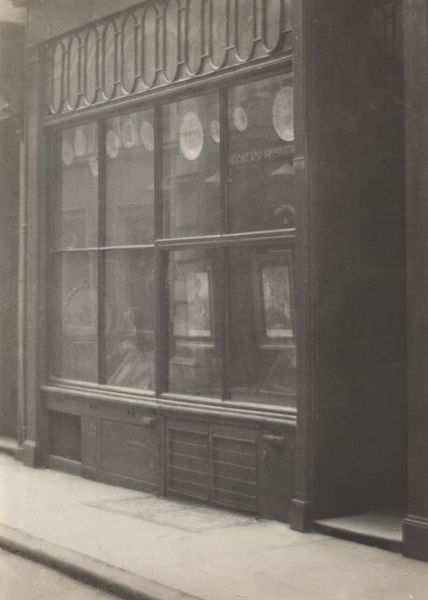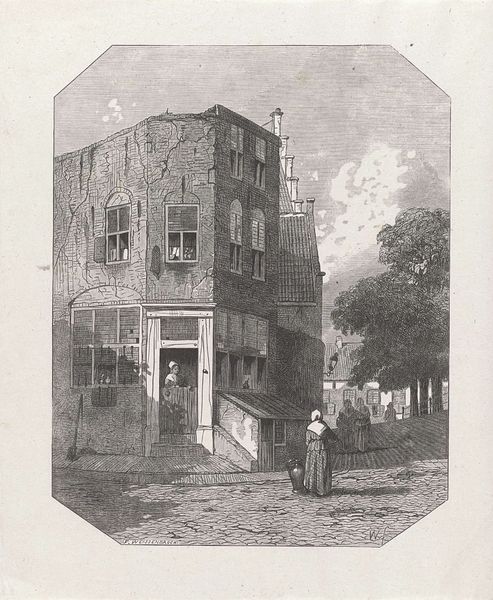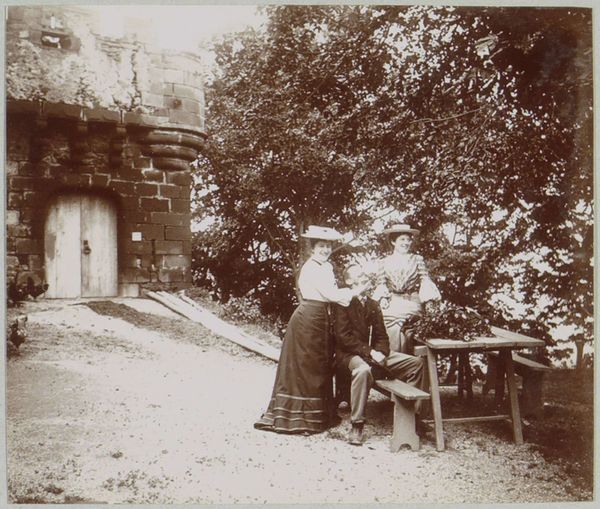
photogravure, photography
#
portrait
#
photogravure
#
street shot
#
outdoor photograph
#
street-photography
#
photography
#
culture event photography
#
england
#
street photography
#
genre-painting
#
realism
Dimensions: 7 1/2 x 4 5/8 in. (19.05 x 11.75 cm) (image)10 5/8 x 7 5/8 in. (26.99 x 19.37 cm) (sheet)
Copyright: No Copyright - United States
Curator: Standing before us is "Old Cronies," a photogravure attributed to Ralph W. Robinson, dating from around the 20th century, currently held in the Minneapolis Institute of Art. Editor: It’s striking, isn't it? The sepia tones lend it a hazy, nostalgic atmosphere. The composition seems meticulously arranged; even the textures are really evocative. Curator: Indeed. The photogravure process itself, involving etching a photographic image onto a copper plate, suggests a laborious and time-consuming method, consciously bridging the gap between mechanical reproduction and traditional printmaking. This reflects the changing role of photography as a form of both documentation and artistic expression within a particular socio-economic context. Editor: Yes, and I find myself drawn to the formal aspects; the careful play of light and shadow across the women's faces, the way their white bonnets create these contrasting focal points. There's a compelling diagonal formed by the buildings converging upwards that guide your eye across the frame. Curator: Precisely, though the diagonal I see also leads down to the tools of manual labor like the pails. How might their daily struggles shape the women we see? I imagine Robinson wanting to portray the dignity of those engaged in this specific kind of physical toil, given the limited access that many people would have to art spaces. The everyday tasks of people became subjects themselves, highlighting changes in art's meaning. Editor: You bring up a salient point about access, but I'm inclined to think Robinson was equally if not more invested in composition and exploring light, using the subject matter to express more universal concerns of old age or interpersonal relationships rather than any commentary on labour. Notice how those buckets mirror and emphasize the conversation occurring overhead. Curator: That may be the intent as viewers see it, but it does not preclude what these items meant, whether food production, hygiene, or cleaning--mundane work became newly significant and valuable. These items appear very clearly here. Editor: I appreciate that perspective. Ultimately, both the subject and method speak to larger dialogues. The meticulous, somewhat archaic photogravure serves to monumentalize these lives—it creates the sense of a precious moment. Curator: I would only add that considering the artistic process alongside a cultural context provides even richer dimensions. Thank you.
Comments
No comments
Be the first to comment and join the conversation on the ultimate creative platform.
